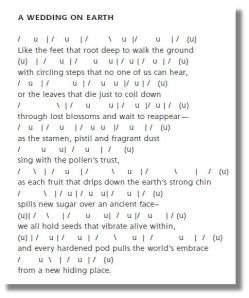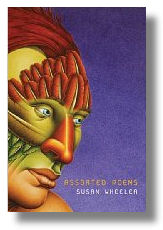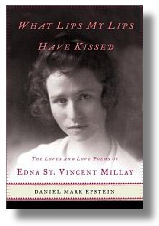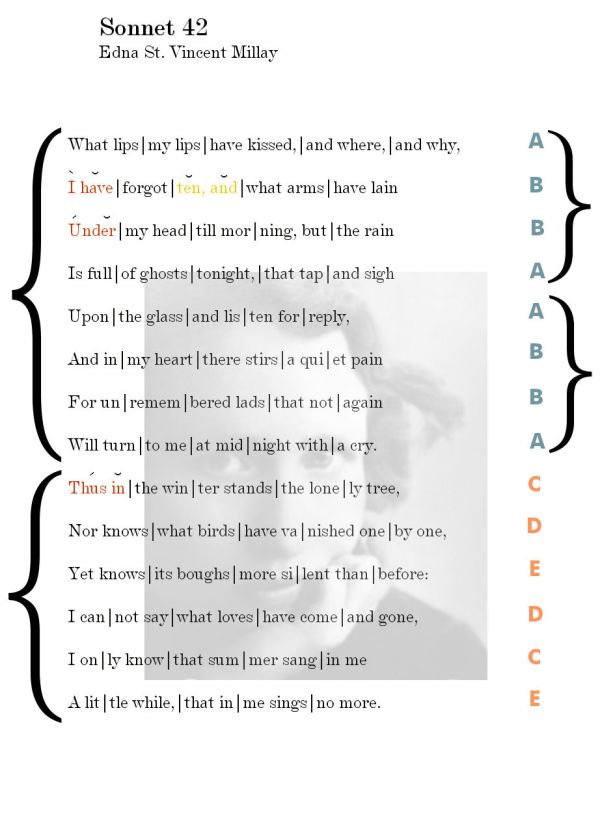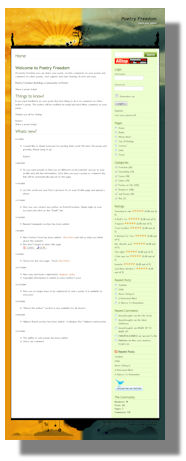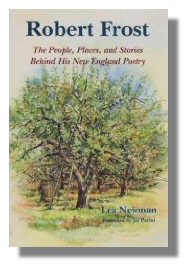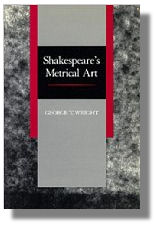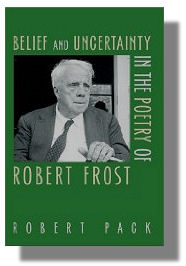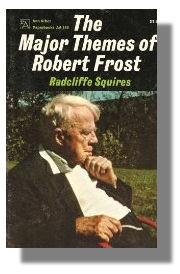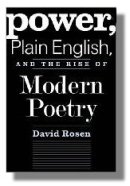“It’s Not Poetry if it Doesn’t Rhyme”
This is the title of a recent post I was reading, and it got me thinking. First of all, it’s a definition of poetry. It defines poetry as something that rhymes and if taken at face value, excludes almost all the works of Shakespeare and Milton. They mainly wrote blank verse. More usually, readers who say this are using “rhyme” figuratively. What they’re really saying is that poetry without form  isn’t poetry. Form includes rhyme and meter. So, what they’re really saying is that free verse isn’t poetry. Apart from whether the definition is wrong or right, that led me to wonder why definitions are important.
isn’t poetry. Form includes rhyme and meter. So, what they’re really saying is that free verse isn’t poetry. Apart from whether the definition is wrong or right, that led me to wonder why definitions are important.
Do definitions matter?
There’s no question that definitions change over time, but we nevertheless have them. Not too long ago, the definition of planets was revisited and Pluto was demoted to a proto-planet. There was disagreement, but not the kind we might have gotten had certain kinds of poetry or poems been demoted to proto-poems (though I think some should be).
But here’s why definitions matter: Without them, no one could excel. Mastery and achievement wouldn’t exist. For example, if not for definitions, sports wouldn’t exist (let alone the Olympics), hence the reason for Robert Frost’s famous quip: Writing free ![]() verse is like playing tennis with the net down. Every rule, in a sport, is a definition that defines the sport. Baseball is defined by its number of outs, bases, players, etc… Once one begins fiddling with the rules that define baseball, then it ceases to be baseball. If there were no rules to baseball, tennis, or basketball, then anyone could play them and everyone could make up their own rules and everyone could be a Babe Ruth or Michael Jordan. For my own part, the first thing I would do is to lower the basket so I could dunk the ball. I’d also make the basket a lot bigger — but only for me. I know I’ll make any number of enemies by following this up with the obvious analogy: There’s no difference between lowering the basket (or the net) and writing without rhyme. There’s no difference between giving yourself 12 outs, instead of 3, and writing without meter. Writing poetry without rhyme and meter is vastly easier. So is dunking a basketball when the hoop is only six feet off the ground. The fact that the NBA would never change the rules for all the wannabes means that the rest of us get to see who the real pros are.
verse is like playing tennis with the net down. Every rule, in a sport, is a definition that defines the sport. Baseball is defined by its number of outs, bases, players, etc… Once one begins fiddling with the rules that define baseball, then it ceases to be baseball. If there were no rules to baseball, tennis, or basketball, then anyone could play them and everyone could make up their own rules and everyone could be a Babe Ruth or Michael Jordan. For my own part, the first thing I would do is to lower the basket so I could dunk the ball. I’d also make the basket a lot bigger — but only for me. I know I’ll make any number of enemies by following this up with the obvious analogy: There’s no difference between lowering the basket (or the net) and writing without rhyme. There’s no difference between giving yourself 12 outs, instead of 3, and writing without meter. Writing poetry without rhyme and meter is vastly easier. So is dunking a basketball when the hoop is only six feet off the ground. The fact that the NBA would never change the rules for all the wannabes means that the rest of us get to see who the real pros are.
Does that make some kinds of poetry better than others?
Does that mean that some things that are called poems, really aren’t?
Yes and yes. Would you prefer watching basketball with or without rules? Having rules that defined poetry allowed a wide variety of poets to excel. Games are nothing more than a defined way of playing and kids love games. Why? Because games give kids a chance to be better than the next kid. Rules give kids a chance to be competitive, to excel, to accomplish and to master.
 When I was growing up in the seventies, poetry was taught with a nebulousness that made clouds look decisive. Poetry was a feeling. There were no rules; and you can still find those Deep Thoughts right up to the present day. On About.Com, Mark Flanagan, apparently tasked with defining poetry, comes up with the following chestnut:
When I was growing up in the seventies, poetry was taught with a nebulousness that made clouds look decisive. Poetry was a feeling. There were no rules; and you can still find those Deep Thoughts right up to the present day. On About.Com, Mark Flanagan, apparently tasked with defining poetry, comes up with the following chestnut:
“…defining poetry is like grasping at the wind – once you catch it, it’s no longer wind.”
The end result of “deep thoughts” like these is that I lost interest in poetry. Who wants to play a game without rules? I decided that poetry was the dumbest art form on the planet. If I saw a game being played willy-nilly, I’d think the same thing. It’s a peculiar thing that the prior generation’s effort to make poetry something “anybody can do” ruined it for children like me. It was only when I began teaching myself about poetry that I learned the truth. There is a definition of poetry. It isn’t easy. You can’t neatly sum it up in a Miriam Webster’s entry, but there is a definition and there are rules. That’s when I got interested in poetry. First, I wanted to learn the rules. Next, I wanted play by the rules. I wanted to prove that I could do it. Next, I wanted to excel. I wanted to master the mystery. Even the seemingly diminutive haiku is defined by centuries of tradition.
Is a definition of poetry useful?
Some readers may object that poetry can’t be compared to sports. The point, however, is not to compare poetry to sports, but to compare a definition of poetry to the kinds of rules that define a sport, music, architecture or carpentry. If you don’t have a definition, then you don’t have a game. If you don’t have a game, then who’s going to watch or play?
Definitions, like rules, are useful because they give us a way to ascertain the skills of the players. They allow us to judge how the player is doing.  One of the hallmarks of the contemporary poetry critic is his and her complete avoidance and non-discussion of the aesthetics or mechanics of poetry. The vast majority of contemporary criticism limits itself to the content of poetry. Why? Because, as with Flanagan’s quote above, contemporary critics and poets have convinced themselves that defining poetry, to quote Flanagan again, “kind of leaves you feeling cheap, dirty, all hollow and empty inside like Chinese food.” However, in order to critique the mechanics/stylistics of a poem, you have to have a definition of poetry. Can’t be any other way. And you have to have a definition of what constitutes mediocre or good writing.
One of the hallmarks of the contemporary poetry critic is his and her complete avoidance and non-discussion of the aesthetics or mechanics of poetry. The vast majority of contemporary criticism limits itself to the content of poetry. Why? Because, as with Flanagan’s quote above, contemporary critics and poets have convinced themselves that defining poetry, to quote Flanagan again, “kind of leaves you feeling cheap, dirty, all hollow and empty inside like Chinese food.” However, in order to critique the mechanics/stylistics of a poem, you have to have a definition of poetry. Can’t be any other way. And you have to have a definition of what constitutes mediocre or good writing.
During a dispute back in 2009, England’s Poetry Society offered the world this definition of poetry:
“There is poetry in everything we say or do, and if something is presented to me as a poem by its creator, or by an observer, I accept that something as a poem.”
In other words, poetry is anything you want it to be, and they do mean anything. Poetry Magazine, for its part, has taken to publishing comic strips, among other things, and calling them poems. What all this means is that if everyone can make up their own rules/definitions, then there’s no way to judge the skills of the poet or the accomplishments of the poem. If there were no rules in Basketball, then a player like Michael Jordan could never emerge. Or how about gymnastics? We would have no means or vocabulary with which to contrast the poor gymnast with the great gymnast. No Tiger Woods could emerge because everyone would be a Tiger Woods. They’re all playing their own special game of golf and the critic has no way to compare or contrast.
Without a definition of poetry, you can’t have criticism of poetry. In truth, you can’t even have poetry because if poetry is anything, then it’s also nothing. Or, as Syndrome put it in the movie The Incredibles: “If everyone’s a super, then no one is a super.” Anyone who can’t define poetry certainly shouldn’t be teaching it. What exactly would they be teaching? A definition of poetry is not only useful, it’s crucial. Individuals and organizations who fail or refuse to address a definition of poetry do a disservice to the reader, to poetry, and to the next generation of poets. Out of curiosity, I googled the following: “definition of poetry” “Poetry Foundation”. I found nothing straightforward. The fact that the Poetry Foundation, the premier (and self-appointed) curator of American Poetry doesn’t offer a definition of poetry (or even a denial that a definition is possible) is a disgrace.
What about it then?
Where can you find a definition? There are all kinds of quips and one-offs by a variety of poets.
Poetry is truth in its Sunday clothes. – Joseph Roux
Poetry is what in a poem makes you laugh, cry, prickle, be silent, makes your toe nails twinkle, makes you want to d o this or that or nothing, makes you know that you are alone in the unknown world, that your bliss and suffering is forever shared and forever all your own. – Dylan Thomas
Poetry is, at bottom, a criticism of life. – Matthew Arnold
I could no more define poetry than a terrier can define a rat. – A.E. Housman
Poetry is the universal language which the heart holds with nature and itself. – William Hazlitt
Poetry is not only dream and vision; it is the skeleton architecture of our lives. It lays the foundations for a future of change, a bridge across our fears of what has never been before. – Audre Lorde
Poetry is all that is worth remembering in life. – William Hazlitt
A poet’s work is to name the unnameable, to point at frauds, to take sides, start arguments, shape the world, and stop it going to sleep. – Salman Rushdie
Poetry is like making a joke. If you get one word wrong at the end of the joke, you’ve lost the whole thing. – W.S. Merwin
Poetry is a way of taking life by the throat. – Robert Frost
Poetry is the record of the best and happiest moments of the happiest and best minds. – Perrcy Bysshe Shelley
At the touch of love everyone becomes a poet. – Plato
Poetry is a search for ways of communication; it must be conducted with openness, flexibility, and a constant readiness to listen. – Fleur Adcock
Do you know how poetry started? I always think that it started when a cave boy came running back to the cave, through the tall grass, shouting as he ran, “Wolf, wolf,” and there was no wolf. His baboon-like parents, great sticklers for the truth, gave him a hiding, no doubt, but poetry had been born—the tall story had been born in the tall grass. – Vladimir Nabokov
Poetry is man’s rebellion against being what he is. – James Branch Cabell
Poetry should surprise by a fine excess and not by singularity—it should strike the reader as a wording of his own highest thoughts, and appear almost a remembrance. – John Keats
All poetry is misrepresentation. – Jeremy Bentham
Poetry is plucking at the heartstrings, and making music with them. – Dennis Gabor
Poetry is not a turning loose of emotion, but an escape from emotion; it is not the expression of personality, but an escape from personality. But, of course, only those who have personality and emotions know what it means to want to escape from these things. – T.S. Eliot
Poetry lifts the veil from the hidden beauty of the world, and makes familiar objects be as if they were not familiar. – Percy Bysshe Shelley
Poetry is at least an elegance and at most a revelation. – Robert Fitzgerald
The poem . . . is a little myth of man’s capacity of making life meaningful. And in the end, the poem is not a thing we see—it is, rather, a light by which we may see—and what we see is life. – Robert Penn Warren
You can tear a poem apart to see what makes it tick . . .. You’re back with the mystery of having been moved by words. The best craftsmanship always leaves holes and gaps . . . so that something that is not in the poem can creep, crawl, flash or thunder in. – Dylan Thomas
Poetry is the language in which man explores his own amazement . . . says heaven and earth in one word . . . speaks of himself and his predicament as though for the first time. – Christopher Fry
Poetry isn’t a profession, it’s a way of life. It’s an empty basket; you put your life into it and make something out of that. – Mary Oliver
Writing poetry is the hard manual labor of the imagination. – Ishmael Reed
Most people ignore most poetry because most poetry ignores most people. – Adrian Mitchell
Prose—it might be speculated—is discourse; poetry ellipsis. Prose is spoken aloud; poetry overheard. The one is presumably articulate and social, a shared language, the voice of “communication”; the other is private, allusive, teasing, sly, idiosyncratic as the spider’s delicate web, a kind of witchcraft unfathomable to ordinary minds. – Joyce Carol Oates
Poetry is the journal of the sea animal living on land, wanting to fly in the air. Poetry is a search for syllables to shoot at the barriers of the unknown and the unknowable. Poetry is a phantom script telling how rainbows are made and why they go away. – Carl Sandburg
Poetry is the breath and finer spirit of all knowledge. – William Wordsworth
Poetry is a deal of joy and pain and wonder, with a dash of the dictionary. – Kahlil Gibran
Poetry is like fish: if it’s fresh, it’s good; if it’s stale, it’s bad; and if you’re not certain, try it on the cat. – Osbert Sitwell
The essentials of poetry are rhythm, dance, and the human voice. – Earle Birney
Poetry is thoughts that breathe, and words that burn. – Thomas Gray
Poetry is ordinary language raised to the n th power. Poetry is boned with ideas, nerved and blooded with emotions, all held together by the delicate, tough skin of words. – Paul Engle
Poetry is the rhythmical creation of beauty in words. – Edgar Allan Poe
Poetry: the best words in the best order. – Samuel Taylor Coleridge
And there are far more at goodreads. You might think there’s nothing very useful in all these quotes, just poets being cute and clever, but there is, actually, a subtle commonality that runs through some of them. “Poetry is truth in its Sunday clothes.” What does Roux mean? That poetry isn’t just the clothes of the workaday, but language that is elevated whether through meter, rhyme or the figures and schema of rhetoric (and these include metaphor, simile, and all figurative language). Hazlitt, “…the universal language…”; Keats, “Poetry should surprise by a fine excess [and] strike the reader as a wording of his own highest thoughts…”; Thomas, “You’re back with the mystery of having been moved by words…“; Fry, “…the language in which man explores his own amazement…”; Oates, “…private, allusive, teasing, sly, idiosyncratic as the spider’s delicate web…”; Sandburg, “…a search for syllables…”; Birney, “The essentials… are rhythm, dance…“; Engle, “Poetry is ordinary language raised to the n th power…”; Poe, “the rhythmical creation of beauty in words…”; Coleridge, “the best words in the best order…“; Frost, “what gets lost in translation…”
What all these have in common is the idea of poetry being defined as a way of using language. Poetry is an art that uses language not only for its semantic content, as a way to communicate, but as an aesthetic experience in and of itself — its “music”: sounds, rhythms, onomatopoeia, assonance, alliteration, and rhymes . Rhyme and meter are the most extroverted expressions, a display of a languages ability to produce repeated sounds and rhythm while the many rhetorical figures, such as simile, hendiadys, anthimeria, puns and verbal metaphor (and figurative language in general) are a more introverted play with language – using words to express ideas that are unexpected and novel. Prose, inasmuch as it also uses these techniques, can be poetic, but the aesthetic aims of prose and poetry are different.
Think of Robert Frost’s final quote, which I deliberately put at the end: Poetry is what gets lost in translation. Because of poetry’s emphasis on linguistic play, poetry is notoriously difficult to translate. Something as basic as a pun, a staple of many haiku, is lost unless both languages are lucky enough to share puns. The wholesale disregard of rhymes, internal or otherwise, when translating into free verse is another example.  Meter is much easier to reproduce, but does any English meter really reproduce the music of Chinese meter or Latin quantitative meter? How about onomatopoeia, alliteration or assonance? These are all essential to poetry, but are nearly impossible to capture, altogether, when moving from one language to another. Poetry truly is what gets lost in translation.
Meter is much easier to reproduce, but does any English meter really reproduce the music of Chinese meter or Latin quantitative meter? How about onomatopoeia, alliteration or assonance? These are all essential to poetry, but are nearly impossible to capture, altogether, when moving from one language to another. Poetry truly is what gets lost in translation.
So many writers, poets and organizations seem pathologically afraid to exclude anyone. But rather than doing the art form a favor, their unwillingness to exclude so much as the ingredients list of Mac & Cheese has done and continues to denigrate the very art form they claim to cherish and encourage. I personally have no qualms drawing a line in the sand. If all a writer is doing is lineating prose, then it’s not poetry or, at best, it’s bad poetry. If the writer does nothing more with language than what I expect from an IRS instruction manual, then it’s not poetry. Content, in my view, is secondary; and that will probably rub a lot of poets and readers the wrong way but unlike, at least, the public stance of numerous poets and organizations, I think it’s worth having some idea, some rules, that define what poetry, and great poetry, truly is. It gives the next generation something to fight for or against.
To quote Salman Rushdie again:
“A poet’s work is to name the unnameable, to point at frauds, to take sides, start arguments, shape the world, and stop it going to sleep.“
Take a position. Define poetry. Write by that definition. It doesn’t have to be mine. Don’t, whatever you do, buy into the bloodless notion that anything and everything is poetry. Poetry isn’t like the wind. As any Japanese poet will unhesitatingly tell you, the wind is like the wind.
Britannica and a definition of Poetry
There are a few sources which have tackled the definition of poetry. I’ve appended a definition provided by Poetry.Org. Their definition was originally copied from Wikipedia (since changed). Wikipedia’s current entry is less a definition than a historical overview. However, one of the more interesting entries is Britannica’s.
Britannica’s entry on poetry begins with a primal scream of terror presented with a stiff upper lip. Only the British can do it. The article’s author writes: “This article considers the difficulty or impossibility of defining poetry…” As anyone knows, there are two reactions when terrified—fight or flight. Britannica opts to fight. The editors begin their definition by roundly upbraiding the reader. Did you really come to Britannica expecting a definition?
“People’s reason for wanting a definition is to take care of the borderline case, and this is what a definition, as if by definition, will not do. That is, if a man asks for a definition of poetry, it will most certainly not be the case that he has never seen one of the objects called poems that are said to embody poetry; on the contrary, he is already tolerably certain what poetry in the main is, and his reason for wanting a definition is either that his certainty has been challenged by someone else or that he wants to take care of a possible or seeming exception to it: hence the perennial squabble about distinguishing poetry from prose, which is rather like distinguishing rain from snow—everyone is reasonably capable of doing so…”
Did you get that? Let me translate: “If you came to the Encyclopedia Britannica looking for a definition of poetry, it’s because you have an agenda and the august editors of Britannica will not, I say will not, be a party to your filthy crusade. So there.” Apparently, the author of the article never got the memo: Definitions are what Encyclopedia’s do. Encyclopedias aren’t supposed to cop attitudes when readers come looking for information.
Britannica next offers a rebuttal to Frost’s quip that poetry is what is lost in translation:
“And yet to even so acute a definition the obvious exception is a startling and a formidable one: some of the greatest poetry in the world is in the Authorized Version of the Bible, which is not only a translation but also, as to its appearance in print, identifiable neither with verse nor with prose in English but rather with a cadence owing something to both.”
So, after having informed the reader that no definition will be forthcoming, the editors (without a hint of irony) assert that the Bible (or an unspecified part therein) is poetry. All it takes, it seems, are a few thees and thous. What the editors apparently fail to consider is that the “poetry” of the King James Bible may not be the “poetry” of the original. The King James Version, in fact, was not a new translation done from scratch, but a revision of The Bishop’s Bible 1568 and the Tyndale’s New Testament of 1526 among others. Besides that, there is considerable dispute as to the faithfulness of the King James Bible. It’s quite likely that the King James Bible is better and more poetic, written during the glory of Elizabethan poetry, than the original. It might be more accurate to call the King James Bible a transliteration rather than a translation. Bottom line: try translating the King James back into Greek and then we’ll talk.
Britannica then follows this up with a curious revelation:
“When people are presented with a series of passages drawn indifferently from poems and stories but all printed as prose, they will show a dominant inclination to identify everything they possibly can as prose.”
How this is relevant to a definition of poetry isn’t exactly clear. For example, when people are presented with passages of iambic pentameter, they regularly misread it (see Iambic Pentameter from Shakespeare to Browning), reading it like prose. Are we therefore to conclude that there’s no difference between blank verse and prose? Both studies probably say more about the “people” than about poetry or iambic pentameter.
Even so, despite the opening disclaimers, provisos and exculpatory cautions, Britannica sides with Justice Potter Stewart (Jacobellis v. Ohio), when it essentially uses the obscenity test (or was it pornography?) to define poetry. To whit: “We know it when we see it.” The editors of Britannica therewith offer up there choice piece of “pornography”:
“Happily, if poetry is almost impossible to define, it is extremely easy to recognize in experience; even untutored children are rarely in doubt about it when it appears:
Little Jack Jingle,
He used to live single,
But when he got tired of this kind of life,
He left off being single, and liv’d with his wife.”
 Immediately following this, the editors finally reveal their true colors:
Immediately following this, the editors finally reveal their true colors:
“It might be objected that this little verse is not of sufficient import and weight to serve as an exemplar for poetry. It ought to be remembered, though, that it has given people pleasure so that they continued to say it until and after it was written down, nearly two centuries ago. The verse has survived, and its survival has something to do with pleasure, with delight; and while it still lives, how many more imposing works of language—epic poems, books of science, philosophy, theology—have gone down, deservedly or not, into dust and silence. It has, obviously, a form, an arrangement of sounds in relation to thoughts that somehow makes its agreeable nonsense closed, complete, and decisive. But this somewhat muddled matter of form deserves a heading and an instance all to itself.”
I couldn’t have said it better. Not only that, you might recognize a common theme: “It has, obviously, a form, an arrangement of sounds in relation to thoughts…” There it is again — language (and form too). This little ditty is a poem because of its language, because of the way it exploits language, not for its notional and semantic content (which is nonsensical), but for the language’s aesthetic properties — the rhyme (parallel sounds) and the meter (accentual). Poetry exploits the properties of language (independent of the poem’s content) to inform and elevate the semantic content. This is what distinguishes poetry from prose. This, traditionally, has been poetry’s reason for being. Prose may be poetic, and display some of the same techniques as poetry (though never end-rhyme or refrains), but that is not its aim or reason for being.
How much should we expect definitions to change?
My guess is that if any objection is to be made, it’s that definitions change. Get used to it. Okay, but then what is it now?
It used to be that if it didn’t rhyme, it wasn’t poetry. If rhyme is understood in its broadest figurative sense (in the sense of a work of literature concerned not just with the content but with the aesthetics of language itself), then I’m still inclined to agree. I’m not willing to concede that  anything and everything is or can be a poem. Either that, or I’m content to call the uncooperative poem a bad poem or, if we want to be trendy, a proto-poem— a minor and lonely object that’s kind of interesting but didn’t quite have enough material to become a full blown poem. In fact, I’m really liking that term.
anything and everything is or can be a poem. Either that, or I’m content to call the uncooperative poem a bad poem or, if we want to be trendy, a proto-poem— a minor and lonely object that’s kind of interesting but didn’t quite have enough material to become a full blown poem. In fact, I’m really liking that term.
I think it’s okay that we hew to an understanding of poetry that has worked for hundreds and thousands of years, the nervous self-indulgence of the twentieth century notwithstanding. And we can change our definition of “rhyme”, in its figurative sense, to include the figurative language available to free verse — assonance, alliteration, and all the rhetoric that has always been more common to poetry than prose. The poetry of Allen Ginsberg is chock-full of rhetorical figures and schema, lest you think that rhetoric only applies to fusty medieval manuscripts (and Walt Whitman’s poetry too). I’d be willing to say that Ginsberg’s poetry, figuratively speaking, has got “rhyme”.
Anyway, the next time somebody is having their kumbaya moment, proclaiming that poetry is like the wind, or a butterfly or that a definition would crush the delicate flower that is poetry, you can come back to this post for a draught of bitter.
Poetry is hard as hell.








